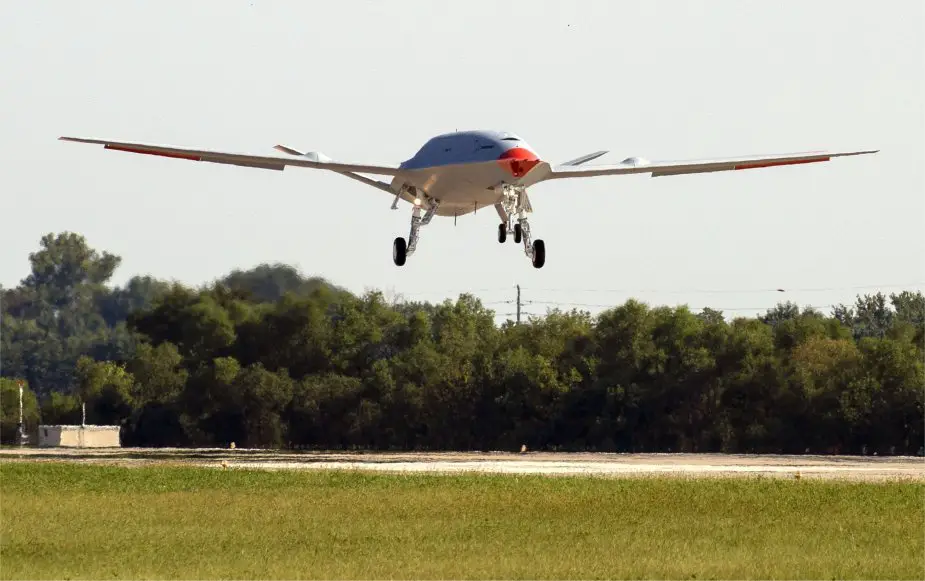Breaking news
Boeing wins contract to deliver batch of MQ-25 Stingray to US Navy.
According to information published by the US DoD on September 28, 2022, the Boeing Co., St. Louis, Missouri, is awarded a $47,468,000 firm-fixed-price advance acquisition contract for the production and delivery of MQ-25 Stingray low-rate initial production lot 1 for the U.S. Navy.
Follow Navy Recognition on Google News at this link
 Boeing MQ-25 Stingray aerial refueling drone (Picture source: US DoD)
Boeing MQ-25 Stingray aerial refueling drone (Picture source: US DoD)
Fiscal 2022 aircraft procurement (Navy) funds in the amount of $47,468,000 will be obligated at the time of award, none of which will expire at the end of the current fiscal year.
This contract was not competitively procured pursuant to Defense Federal Acquisition Regulation 6.302-1. The Naval Air Systems Command, Patuxent River, Maryland, is the contracting activity (N0001922C0048).
The MQ-25™ Stingray will be the world’s first operational, carrier-based unmanned aircraft and provide aerial refueling and intelligence, surveillance and reconnaissance (ISR) capabilities that enhance capability and versatility for the Carrier Air Wing (CVW) and Carrier Strike Group (CSG).
Integration of a persistent, sea-based tanker into the CVW will make better use of our combat strike fighters and extend the range of our aircraft carriers.
The system will be a critical part of the future CVW and is central to the Navy’s strategic Unmanned Campaign Framework, laying the foundation for all future carrier-based unmanned systems and pioneering the cutting-edge manned-unmanned teaming (MUM-T) operational concept. The Navy plans for all NIMITZ and FORD-class carriers to eventually be MQ-25 capable.
MQ-25 is comprised of two major segments: The MQ-25 Air System (air vehicle), and the Unmanned Carrier Aviation Mission Control System (UMCS), the system required for carrier integration and command and control of the MQ-25 air vehicle and payload. PMA-268 manages these segments as the government Lead Systems Integrator (LSI).
Boeing's MQ-25 design is powered by one Rolls-Royce AE 3007N turbofan engine delivering 10,000 lbf (44 kN) of thrust; this is a variant of the engine used to power the Navy's MQ-4C Triton. The aircraft is less stealthy than flying-wing UAVs. It does feature a stealthy fuselage shaping, flush inlet to shield engine blades from radar and V-tail.





























